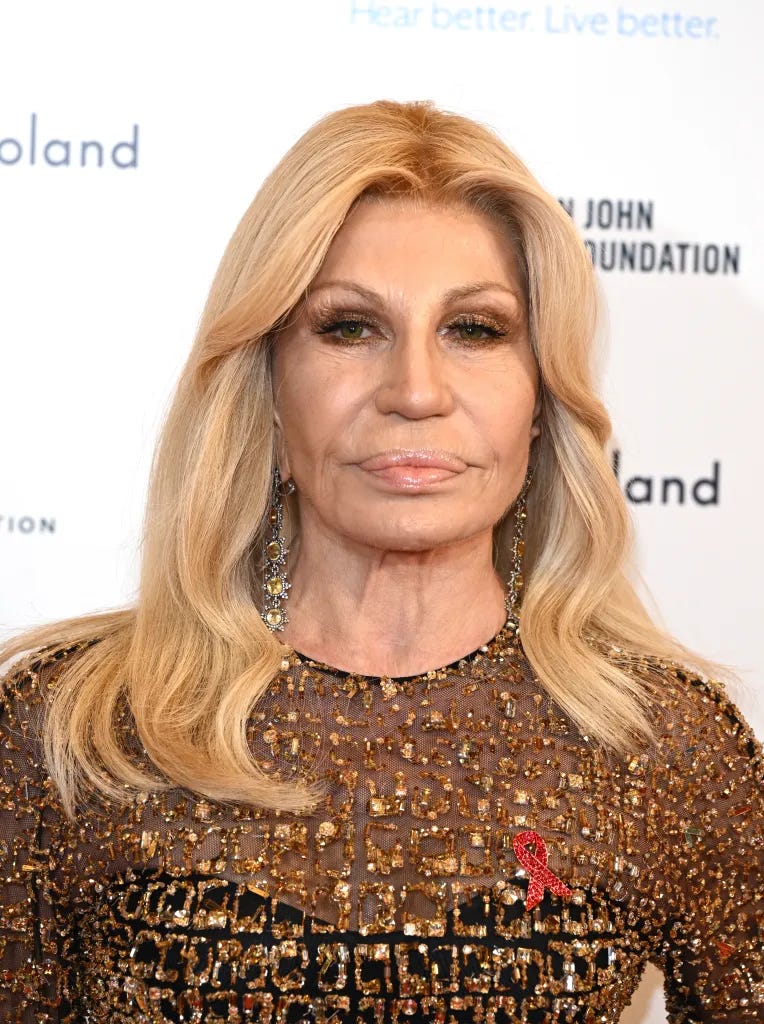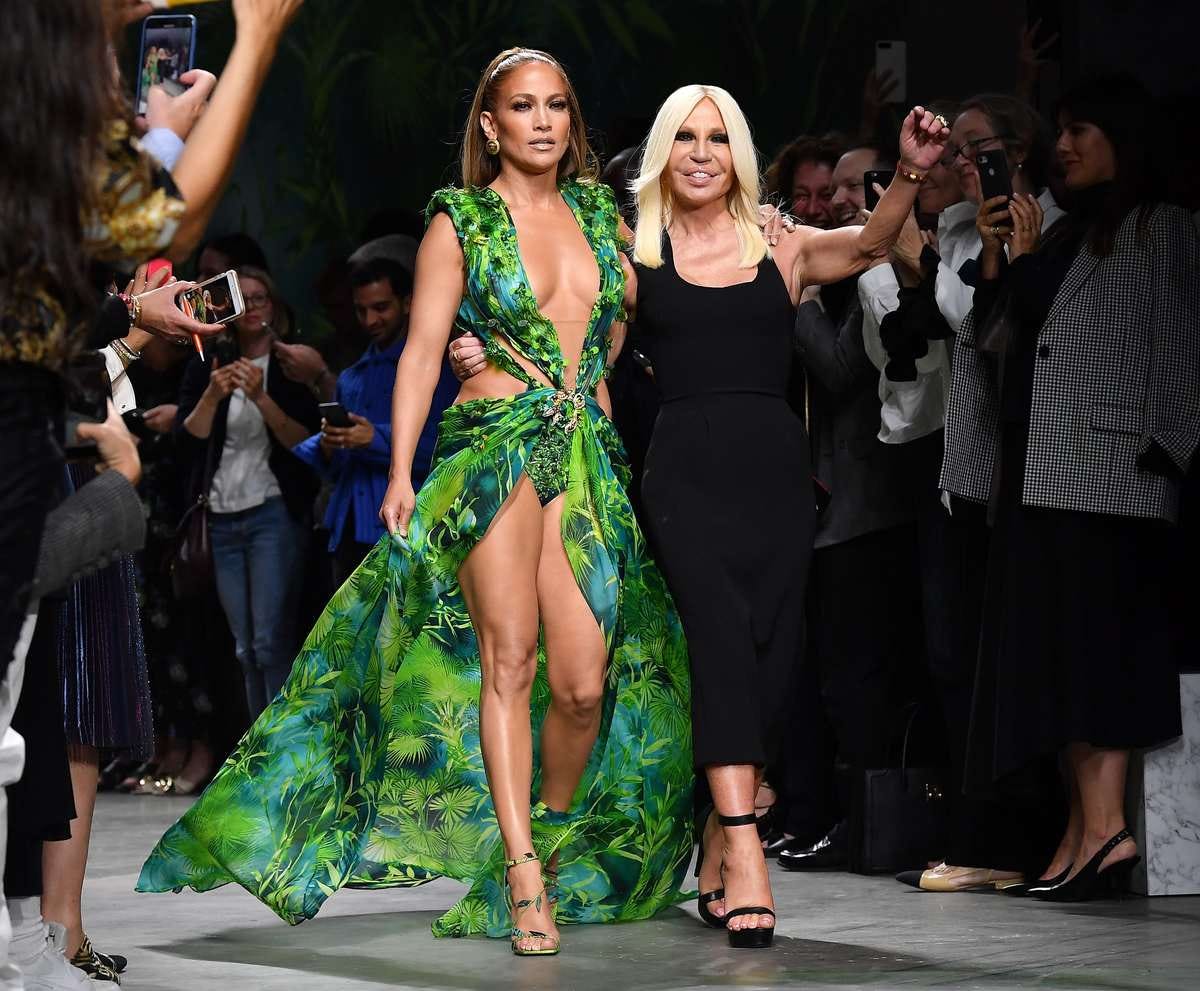How Donatella Versace Continued Her Brother's Empire
Her journey in preserving and evolving the family fashion house.
Last month Donatella Versace stepped down from her role as Creative Director after a successful 27 year tenure. While she didn’t start the company herself, Gianni frequently stated that she was his muse, and anyone could argue that Versace wouldn’t be what it was today without her. She held her ground through CEO changes, difficult global markets that rocked luxury apparel, the ever-changing needs and wants from consumers, and several personal struggles. She’s brought to market some of fashion’s most beloved pieces, and did it all without knowing how to sew.
Donatella joined Versace immediately after her brother Gianni decided to start his own clothing brand after working in fashion for a number of years. Her initial focus was on design as well as PR and branding, but her role expanded after Gianni’s murder when she officially became the Creative Director. Her other brother Santos took on the CEO role. She struck a great balance between the Versace her brother devoted his life to and putting her unique spin on the brand to keep it fresh and relevant. But her reign didn’t come without setbacks. Her ascension as a leader in the company was during the height of a fierce rivalry between Versace (a loud brand that was considered flashy and provocative) and Giorgio Armani (a much more subdued and conservative approach to luxury). She and Santos would butt heads frequently about how the business should be run, and it didn’t help that Gianni had given Donatella’s daughter Allegra a large portion of the business that she didn’t have a keen interest in being part of. Donatella also battled an unfortunate drug addiction for years after Gianni’s passing and eventually checked herself into rehab in 2004 after singer and friend Elton John suggested that she get help.
A few years prior to her rehab stint, she designed a dress that had a domino effect within another industry. In 2000 she created the famous “jungle dress” that Jennifer Lopez wore to the Grammy’s. She looked stunning while wearing it, and it quickly became the number one most searched phrase on Google. This caught the attention of Eric Schmidt, the tech giant’s then CEO, because at the time Google was purely a text based search engine. This led to the creation of what we now know as Google Images and its implementation was led by the late Susan Wojcicki, who would go on to become YouTube’s CEO. As an ode to their impact to the tech industry, Versace incorporated a short video about their recent Google influence into the fashion week that closely followed.
She was also instrumental in relaunching Versus, a line that Gianni had gifted to her years ago that was shuttered for financial reasons. Versus was a diffusion line (a common strategy among high priced luxury brands) that offered various pieces and accessories at lower price points and allowed younger consumers to get looped into their brand. During this line’s second tenure she was able to bring on brand ambassadors like M.I.A. and outside designers like Jonathan Anderson (well before his meteoric rise at Loewe). Versus had its second run through 2018 when the decision was made to fold it into Versace Jeans to create Versace Jeans Couture.
The company hit a snag in the 2010s when revenue started to decline. While the family wanted to retain as much control as possible, they knew they needed a cash infusion to keep the company alive. They put the brand up for sale, and Kering (the giant holding company that touts brands like Gucci, YSL, Creed, Balenciaga, etc) was one of the stronger bids at just under two billion euros. They were eventually outbid by Michael Kors, who had bought Jimmy Choo the year before, and eventually rebranded as Capri Holdings. Versace had an improved financial situation, but there were challenges between the Americans running Capri and the Versace team in Italy. The Americans were constantly asking about how various metrics would impact the business, but the Italians on the design team were much more concerned about how various releases would play into the house’s heritage and what feelings these clothes would evoke from customers. Capri Holding’s CEO John Idol would frequently argue with Donatella saying he knew what would sell better commercially and that Versace’s brand needed to be toned down, but she stood her ground, rebutting that she knew what she was doing and this is what their customers wanted. Her determination to evolve the brand while keeping its essence the same is what made this company so special. A theme I’ve touched on a few times is the difference that brands have after being acquired, and if you look closely at the fashion weeks after the Versace purchase, you can see dramatic shifts between their Autumn/Winter and Spring/Summer runways for several years as a manifestation of these aforementioned arguments. Rumors late last year started to surface that Prada wanted to buy Versace, which confused quite a few people given that the two companies are so different from a creative lens.
Versace announced that their next creative director will be Dario Vitale, who previously led Miu Miu’s creative efforts. In my opinion this move was the biggest signal that Prada Group’s purchase of Versace would be soon finalized. Miu Miu is in the Prada Group portfolio and arguably one of the most exciting and relevant brands in luxury today. Planting a familiar and trusted face in that seat shows how they wanted to start lining up the pieces for a smooth transition. Donatella may not be at the helm anymore, but that doesn’t mean she won’t have an active role at the company. She frequently says that she’ll continue to be the brand’s biggest advocate in her new role as the Chief Brand Ambassador, where she’ll be focused on Versace’s philanthropic efforts.



